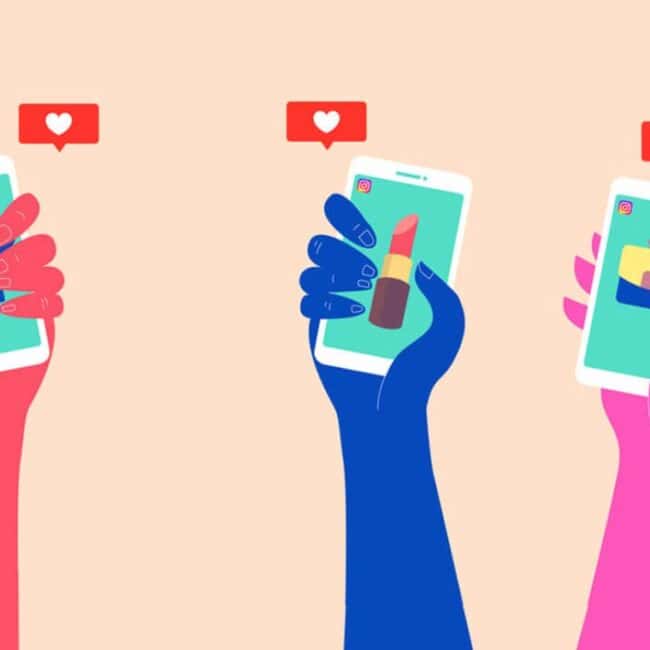
How consumers decide to buy
Reading Time: 5 minutesGreat salespeople know that in order to persuade potential customers to buy, you must understand how buyers think. Read on to find out more about the psychology of buying.
Psychology of Buying
Great salespeople know that in order to persuade potential customers to buy, you must understand how buyers think. It’s all about making people feel a certain emotion that will compel them to purchase.
How often do you want to get inside the heads of your customers?
All businesses want to know what makes their customers tick, and how they make their purchase decisions. Figuring that out, though, is a huge challenge.
This is especially true since every customer is different. Every person has their own likes, dislikes, values, motivations, dreams, and goals.
Nobody fits in a neat and tidy box.
Despite this challenge, companies go to great lengths to find out how their customers make the decision to purchase a product.
A whole branch of psychology is even dedicated to this subject: behavioral economics. Although, some refer to it as buyer psychology. While the psychology of buying may sound intimidating at first, you don’t have to go out and get a degree in psychology to learn about why people buy the products they do.
Psychological factors you should know about
Long term vs. short term
Your customers basically have two different ways of looking at purchase decisions. One mindset looks at the long term benefits, while the other looks at the short term.
Essentially, the long term mindset is the planner. It focuses on longer lasting benefits. The short term mindset, on the other hand, is the doer. It wants instant satisfaction. Someone who is merely learning about a product is thinking long term. They’re not ready to buy yet — they’re just browsing.
An actual buyer (someone who wants to buy right now) is a doer. They want gratification as quickly as possible.
Consumers have to juggle with these two mindsets constantly. Figuring out how to satisfy the planner mindset while transitioning them into the doer mindset should be your goal.
The basic needs
Psychologists have determined that every person is pursuing one of three basic needs: wealth, health, and relationships. And we’re all trying to find fulfillment and happiness in those three categories.
Businesses should base their products on one of those areas or core markets. Once you know that customers are looking for those things, your ability to sell to them just became easier.
Think about what your product offers in one of those three core markets. These areas may seem a bit broad to start off with, but you can narrow things down even further. Within each category, you’ll find submarkets. In health, for example, there are submarkets like weight loss, nutrition, and strength training.
Now go one level further. Narrow down the submarket, and develop your niche.
Psychology of buying: The 3 Markets, Sub-markets, Your Niche
If you target your product to that niche, you’ll see a lot more success. You differentiate yourself from competitors, carving out your own spot in the broad ecosystem of buyer psychology, and all the while you’ll be helping buyers satisfy one of their basic needs.
Learning and Temperatures
Buyers make a decision by following a certain learning pathway. That pathway goes like this: cognitive learning —> constructivist learning —> experiential learning. Here’s how that all plays out.
In cognitive learning mode, consumers try to learn all they can about a product by reading about it, watching videos, talking to friends, reading consumer reviews, and more. They’re trying to take in as much information as possible.
Constructivist learning takes that information and applies it to their lives. They try to answer questions like, “How would I personally benefit from this product?”
Finally, experiential learning is testing out and applying that information. So this would be where the consumer buys the product (or gets a free trial) and uses it.
These steps of the learning pathway go hand-in-hand with the “temperature” of the buyer. Customers considered “cold” are simply learning from a distance. “Hot” customers are those who are ready to act. The task then becomes turning those cold customers into hot ones.
With an effective sales funnel the process of “warming up” buyers can be quicker and easier than ever and can involve offering smaller commitments up front so customers get more comfortable and trust you more. Then, as they continue along the sales funnel, they’ll make bigger and bigger commitments. This isn’t something that has to happen over the space of days, weeks, or months. In fact, it can happen all in the same funnel with minutes of each other.
Experts have looked at how buyers make purchase decisions and come up with some fascinating discoveries. Let’s take a quick look at some of the most interesting ones.
Consumers are emotional
- While they may scoff at this characterisation, consumers tend to use their emotions when making a purchase.
- Those emotions can come in a wide range, from fear to pride to altruism, but no matter what forms they come in, they often overrule logic.
- They will try to back up their emotional decision making with facts (hopefully facts that you’ve supplied), but it still all comes down to emotions.
Consumers respond to stories
Take two scenarios of businesses pushing similar products.
- One is a faceless corporation simply pushing the item in a direct manner.
- The other is a smaller business, but one that features a human face and a relatable story with the item.
Which scenario will better connect with the consumer? If you guessed the second one, you’re right.
You need to establish that emotional connection with the customer. As mentioned above, customers make purchase decisions based on emotions.
In the psychology of buying, this is called The Epiphany Bridge, where a customer has an emotional reaction to what you’re telling them. It leads them to move forward, and after crossing that bridge, they’ll then use logic to justify their purchase.
So how do you craft a good Epiphany Bridge story? You follow The Hero’s two Journeys approach.
In The Hero’s 2 Journeys, stories are kept simple and help build a rapport with the hero (you). They establish the hero’s desire (journey 1) and the conflict they’ve overcome to reach it (journey 2).
Simply put, buyers respond more positively to stories. Make sure you’re telling one that they’ll want to follow.
Consumers want to avoid loss
- If there’s one thing consumers hate, it’s losing money.
- Many would rather avoid losing it over actually gaining something.
- This is sometimes called “loss aversion”. We have a strong emotional attachment to loss and want to do anything we can to avoid it.
- A fear of loss also applies to missing out on opportunities. If we think something is scarce, we have a natural tendency to want to act right away.
If you implement scarcity as part of your sales funnel, you’re encouraging urgency on the part of the customer. Limited time offers can be a part of this strategy. Or you could indicate a product will run out soon. Buyers will want to jump on these chances to avoid missing out a great deal.
Consumers like to go with the flow
- Many people like to think they’re unaffected by what everyone else thinks and does.
- But the truth is, if everyone else is doing it, you’ll probably want to do it too.
- Consumers are the same. They love to follow the crowd.
- The more other people are doing something, the more they’ll want to go right along with them.
That’s why including customer reviews, leveraging testimonials, and promoting products on social media channels can be so effective. It demonstrates that consumers aren’t just buying a product, they’re becoming part of a movement.
Using psychology for business success
When looking at the psychology of buying, you can get a good sense of what drives your customers. The factors discussed above are only the tip of the iceberg. There’s plenty more to uncover if you want to look for it.
At Advocate we can help you leverage buyer psychology when creating marketing led sales funnels. To find out more, contact the team today.
Post a Comment cancel reply
You must be logged in to post a comment.





